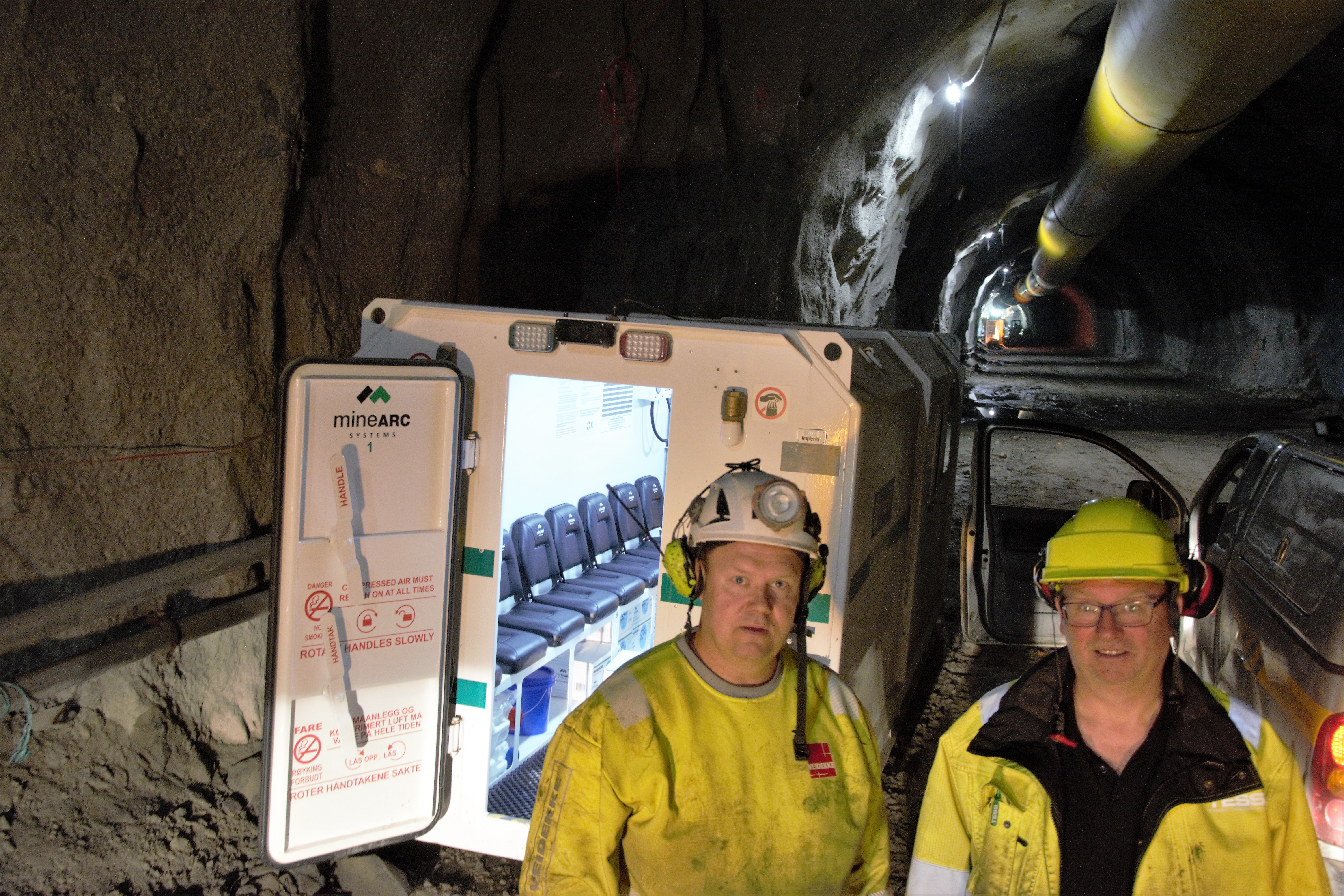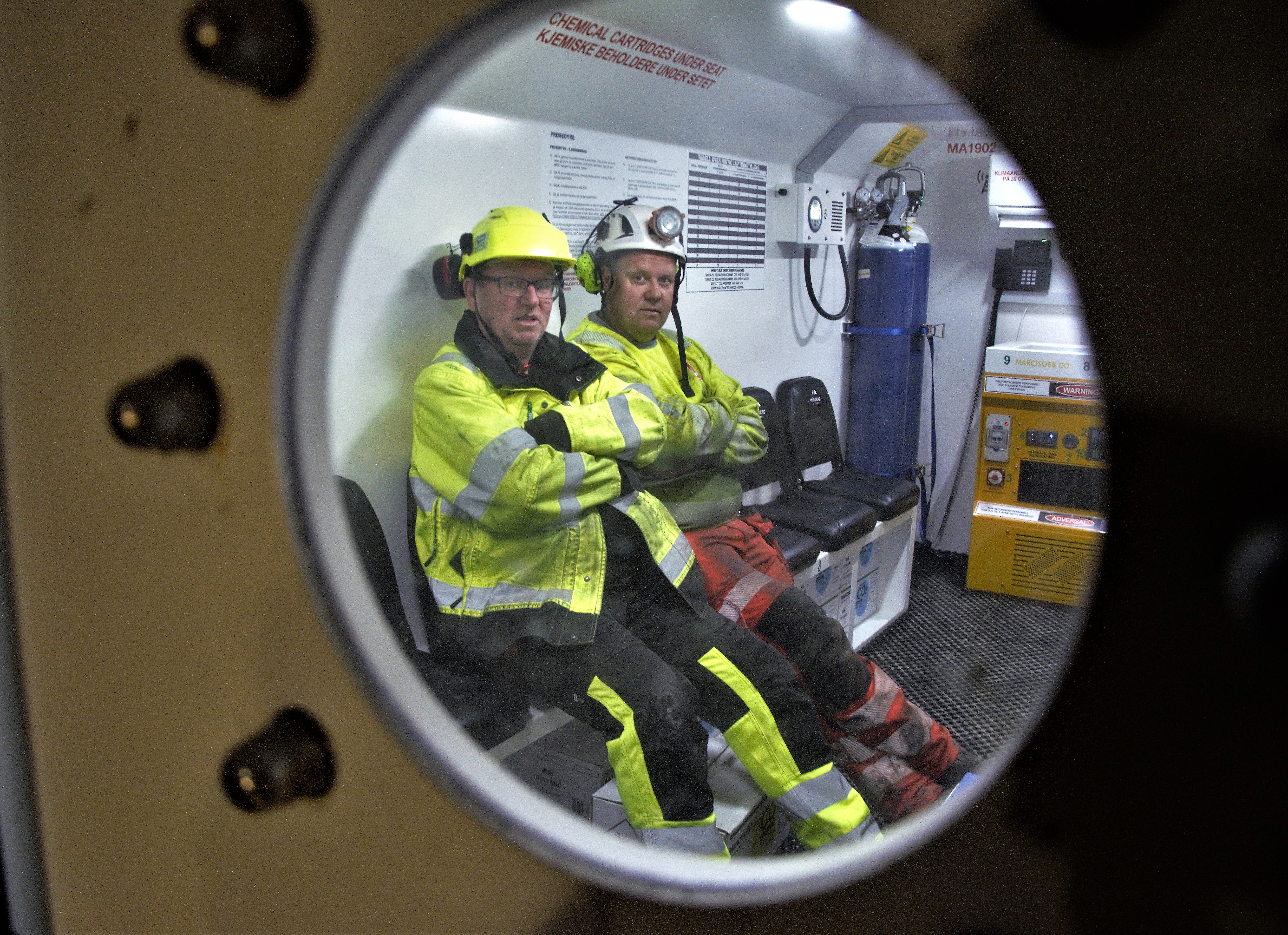The tunnel project is extensive and complex, requiring a lot to be produced in a short time with strict execution and safety standards.
- When tunneling reaches 500 meters into the mountain, refuge chambers are required. These are designed to protect tunnel personnel from incidents such as fires, gas, and landslides, says Knut Kristiansen, a technician at Veidekke, a subcontractor to Implenia on the tunneling projects in Lyngdal.
The projects will eventually become the 3.4-kilometer Rossåstunnel and the 2.7-kilometer Kålåstunnel. The first refuge chamber was placed in the Røysgård section of the site in June 2022. The other two are on their way from the manufacturer MineARC in Australia, for which TESS holds the exclusive agency in Norway.

UNIQUE CHAMBER SERVICE: The first of three MineARC refuge chambers is now in place in the Kålåstunnel in Lyngdal. According to Knut Kristiansen (left) from Veidekke and Ove Harry Arnesen from TESS Mandal, tunnel workers can stay in the mobile refuge chamber for days in the event of an incident.
Photo: Ole Åsmund Brattfjord, Fugleburet Media.
Setting a New Standard
Mobile refuge chambers have been on the market for a long time, but those offered by TESS now set a completely new standard for such solutions. For example, in the new chambers, there is no need to wear a breathing mask, which is a stress-reducing factor. Additionally, the chambers have internet coverage and good communication options with the outside, both via sound and video. They are self-sufficient with power and the correct breathing atmosphere, have a controlled indoor climate, stable and comfortable temperature, and humidity. They are also, of course, equipped with necessary first aid equipment, as well as food and drink.
- The rescue chamber offers high comfort, including toilet facilities, all to make a stay during an incident as stress-free and non-traumatic as possible. There is even a deck of cards for passing the time, smiles customer advisor Ove Harry Arnesen from TESS in Mandal.
How long can you stay in such a chamber?
- It depends on the number of people, but based on the shift working here in the Kålåstunnel, it could be days. At a maximum capacity of 30 people, one can stay in the refuge chamber for up to nine hours. Each shift here consists of eight people, of which 3-5 are inside the actual tunnel at any given time. In the event of an incident, they could theoretically stay in the refuge chamber for days, says Knut Kristiansen, adding that the refuge chamber is moved further into the tunnel as each blast reveals a new section.

Knut Kristiansen from Veidekke and Ove Harry Arnesen from TESS Mandal have taken their places in the rescue chamber.
Photo: Ole Åsmund Brattfjord, Fugleburet Media.
Offering Training and Practice
When rescue chambers are deployed, certified instructors from TESS always ensure the necessary training for the users. Kim Holtvind, department manager at TESS Mandal, and customer advisor Ove Harry Arnesen are both certified instructors from MineARC and are responsible for the mandatory training of all tunnel workers associated with the E39 Lyngdal project.
- We have conducted courses for all four shifts – each with 8-10 people. The course includes theory and an overview of the rescue chamber’s technical construction, capacity, and use in emergencies, followed by a physical walkthrough and trial of the rescue chamber where it is functionally ready inside the tunnel. The most important thing is that all course participants can operate the chamber on their own and know that they are safe there in case of an emergency.
Brief Overview of the E39 Lyngdal East – Lyngdal West Project

